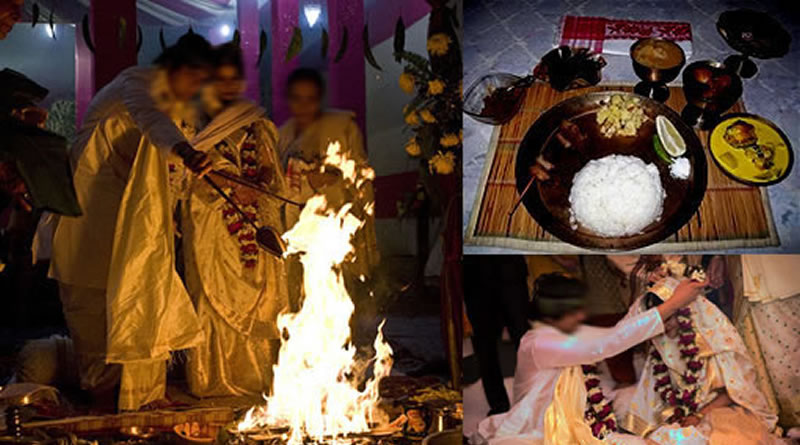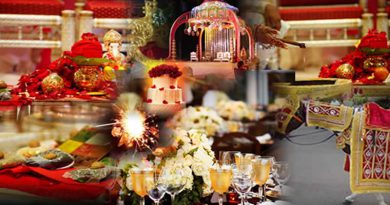Assamese Wedding and its traditional customs, rituals and values!
In Assamese language, the ceremony is known as Biya. Similar to Hindu wedding, an Assamese wedding also has pre wedding and post wedding rituals. It is simple and yet very graceful.
GahoiMumbai.com is delighted to provide an insight on Assamese Wedding and its traditional rituals…
Overview:
An Assamese wedding is the wedding ceremony which takes place in the state of Assam or between Assamese people. In Assamese language, the ceremony is known as Biya. Similar to Hindu wedding, an Assamese wedding also has pre wedding and post wedding rituals. It is simple and yet very graceful. One of the distinctive and key characteristic of the wedding is the traditional ‘biya naam’ song.
GahoiMumbai.com is thrilled to provide an insight on Pre Wedding Rituals in details.
Pre Wedding Rituals in Assamese Wedding:
The pre wedding rituals include Juran ceremony, Tel Diya tradition, Pani Tola & Nuani tradition.
Juran ritual – a pre wedding Ritual:
In Juran ritual, the groom’s mother visits the house of the bride. The bride’s mother greets her and gives her xhorai, brass plate with a stem.
Tel Diya ritual – a pre wedding Ritual:
the groom’s mother puts a ring and betel on her daughter-in-law’s hair parting. Over this she pours oil thrice. After this, she applies her sindoor and gives the wedding trousseau. It includes mekhla chadar, the traditional Assamese dress for women.
Pani Tola ritual – a pre wedding Ritual:
In Pani Tola tradition, the mothers of the bride and the groom gather holy water for the ceremonial bath of the bride.
Nuani ritual – a pre wedding Ritual:
According to Nuani ritual, the bride is given a bath to prepare her for the wedding.
Wedding Rituals in Assamese Wedding:
The marriage rituals begin with the traditional bath of the bride and the groom. For this their respective mothers visit the nearby river and collect holy water. After this the wedding reception takes place, wherein splendid food is served to the guests, with fish and meat as the highlights. This is followed by the procession of the groom. When he finally reaches the wedding venue, the bride’s family indulges in fun activities.
The groom’s procession is given entry into the bride’s home only after they pay a heavy cash amount. Consequently, the bride’s mother welcomes him while the bride’s sister washes his feet.
Next, the brother of the bride lifts him to take him to the marriage hall. The groom is usually dress in dhoti, kurta and silk shawl. The bride is given panch – amrit, before going to the hall. It is a mixture of ghee, curd, honey, sugar and raw milk.
This is followed by an extraordinary entry of the bride on the shoulders of her maternal uncle. Here, the wedding ceremony takes place in front of the holy fire. The couple exchange garlands and takes vows amongst chanting mantras. After this, conch shells are blown and the groom puts vermillion in bride’s forehead. Friends and relatives then step forward to bless the newlywed couple. Now the wedding ceremony is over. After the wedding ceremony, the couple moves to groom’s house where they are greeted by the groom’s mother with traditional Aarti.
If you need any help regarding Assamese wedding ceremony or Assamese wedding management, please leave your message about your dates, ideas and budget plans at our Wedding Help Centre.
All this information is free and only for informational purpose.




